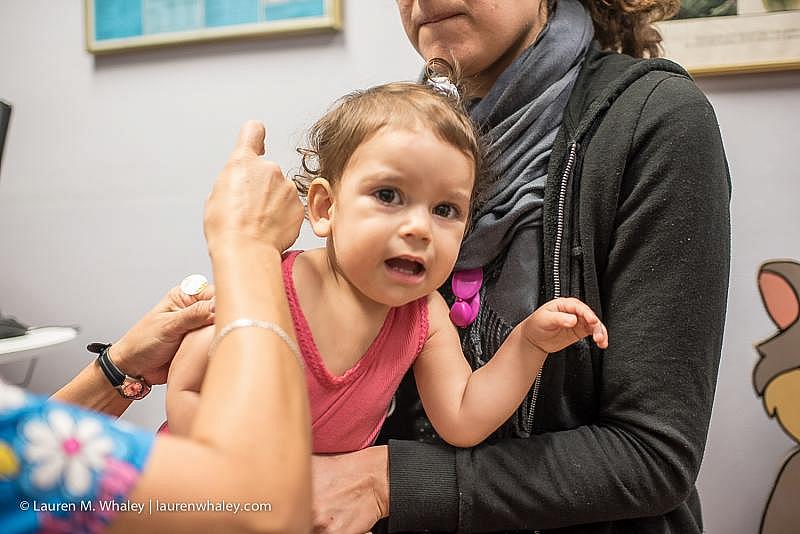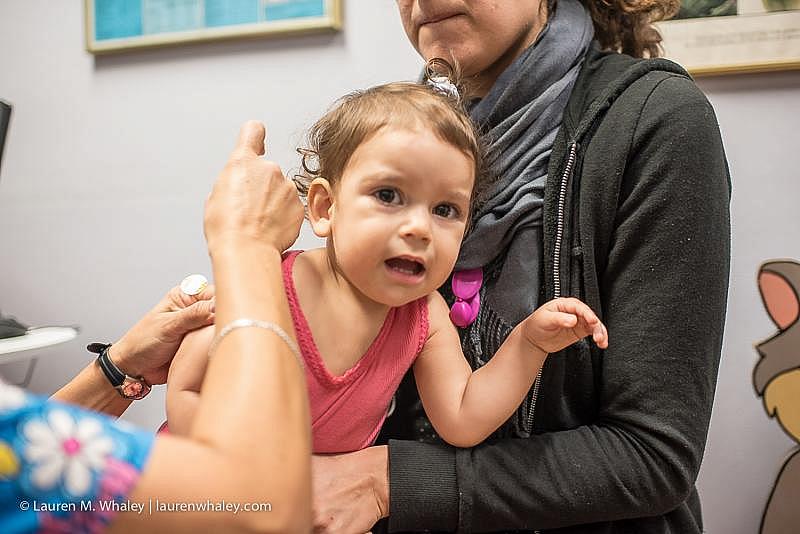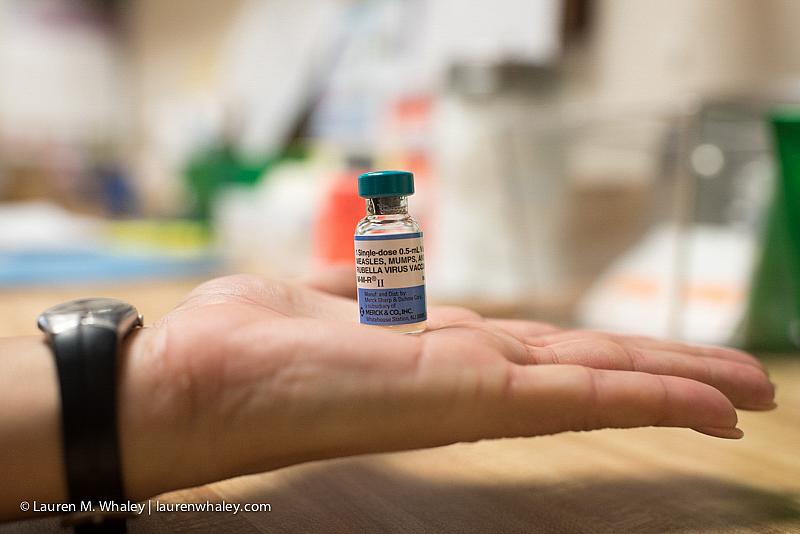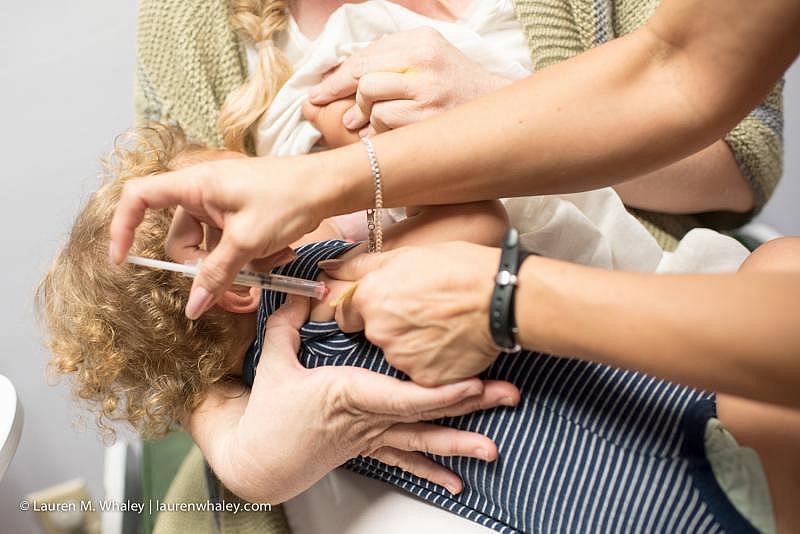Needles, screams and vials — those vaccination photos

Needles plunging into arms. Screaming toddlers. A stock image of a vial.
These images often illustrate stories about childhood vaccinations. But maybe they shouldn’t.
I have written 10 articles about vaccines in California since the measles outbreak that started in December at Disneyland. One detailed how Los Angeles Unified and other districts around the state were falling down on their legal obligation to make sure their kindergarteners received all their required immunizations. Another one showed how only about 70 percent of Los Angeles day cares and preschools even bothered to submit their mandatory vaccine rate report to the California Department of Public Health. The 30 percent that didn’t faced absolutely no punishment.
As the multimedia journalist at the Center for Health Reporting, I tell stories using video, photography, radio and writing. For these data-heavy vaccination stories, I became the lead print reporter, focusing mainly on writing. I should have paid more attention to the images.
For the story on under-vaccinated kids, our newspaper partner led the piece with a needle going into an arm and showed a smaller picture below the fold of a photograph I had taken of a mother reading to her kids.
For subsequent stories, I went to my local pediatrician’s office and took the picture everyone has become accustomed to: a child being held down and stuck with a needle.

And, the requisite, vial of the MMR vaccine balanced on a nurse’s palm and a refrigerator stocked with vaccine doses.

I showed one toddler getting his first MMR shot while breastfeeding. You still see the needle and the adult hands, but not the screams.

After my daycare piece, which featured a photo of a scared child getting her first MMR shot, ran in the Los Angeles News Group newspapers, I received a reader response titled “Those Photos.”
Kay Kanuit from Redondo Beach told me I needed to use my “communication resources to promote the advantages of immunizing children and stop the traditional use of medieval style photos that continue to scare people away.”
These images were accurate. They did tell a story. And as a mother, I saw how my son cried his first real tears when he received his immunizations at two months.
But, Ms. Kanuit made an excellent point.
At a panel I recently moderated at the national Association of Health Care Journalists’ conference on covering vaccines, panelist Dr. Betsy Rosenblum, a family medicine doctor and professor of clinical medicine at UC San Diego Health System, brought up this issue as she opened her talk.
It is the media’s responsibility to use photos that illustrate positive and accurate aspects of vaccine stories, she said. She suggested showing images of healthy children, since that’s what vaccinations allow kids to be.
During the panel, KQED videographer Jeremy Raff tweeted a video he had produced about a young child who had leukemia and who, due to his compromised immune system, is unable to get vaccinated. That child has become the face of those who benefit from herd immunity, when a vaccinated community protects those who cannot be immunized. Telling one person’s story visually is often a good way to get at a bigger issue.
Freelance journalist Tara Haelle feels strongly about this issue of vaccination imagery. She tweeted during my panel about different resources for finding so-called “good images” to illustrate vaccination stories.
To find good images for #vaccine story: sxc.hu, search Creative Commons on Flickr, Google images, Wikimedia #ahcj15
— Tara Haelle (@tarahaelle) April 26, 2015
What images to use 4 #vaccines stories? Smiling kids, kids w bandaids, hugging, family, disease itself; avoid needles, crying, etc #ahcj15
— Tara Haelle (@tarahaelle) April 26, 2015
We journalists have to be as accurate as possible with our words and our pictures. If the story is about parents protesting California Senate Bill SB277 (which would only allow children with a medical exemption to attend school unvaccinated), photos of parents lining up to testify are appropriate. If the story is about adults seeking an MMR shot to ensure they are immunized against measles, perhaps a stock photo of the MMR vial is the best one to use.
If the story is about children getting vaccinated, maybe the truest picture is one as Tara Haelle suggests: a kid getting a sticker or modeling her Band-Aid.
In her letter, Ms Kanuit wrote in response to my images:
“Please consider the effect these scary photos have on the minds of the general public.”
I agree. We need to be as thoughtful with our art choices as with our words. Maybe even more so.

